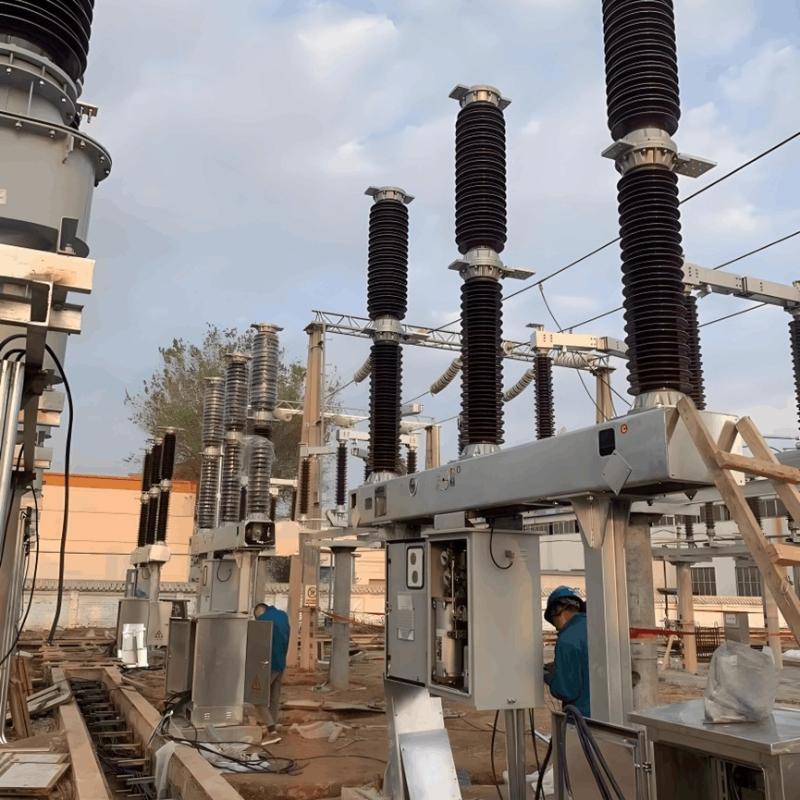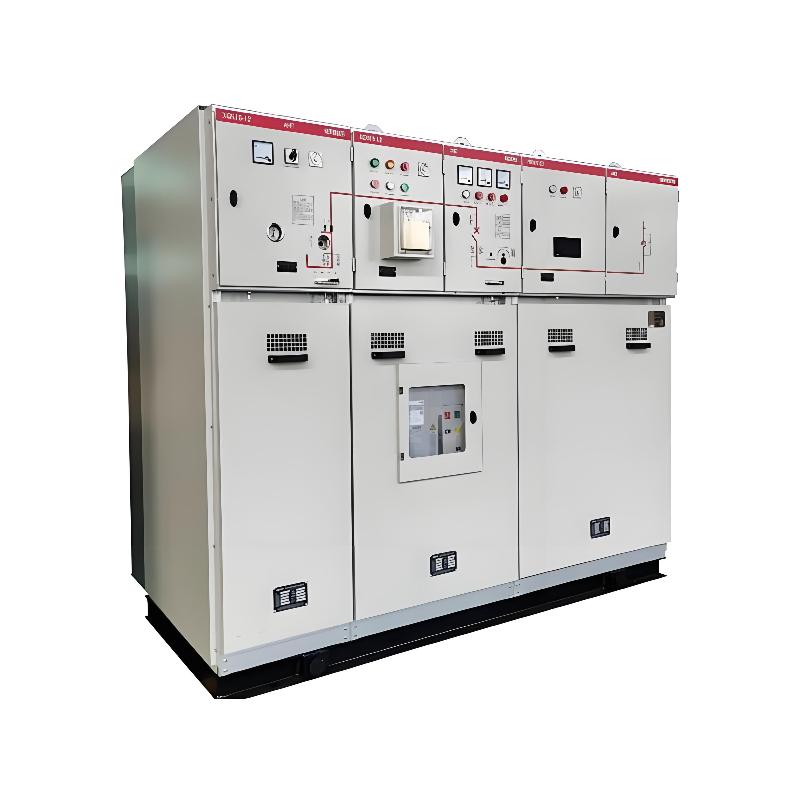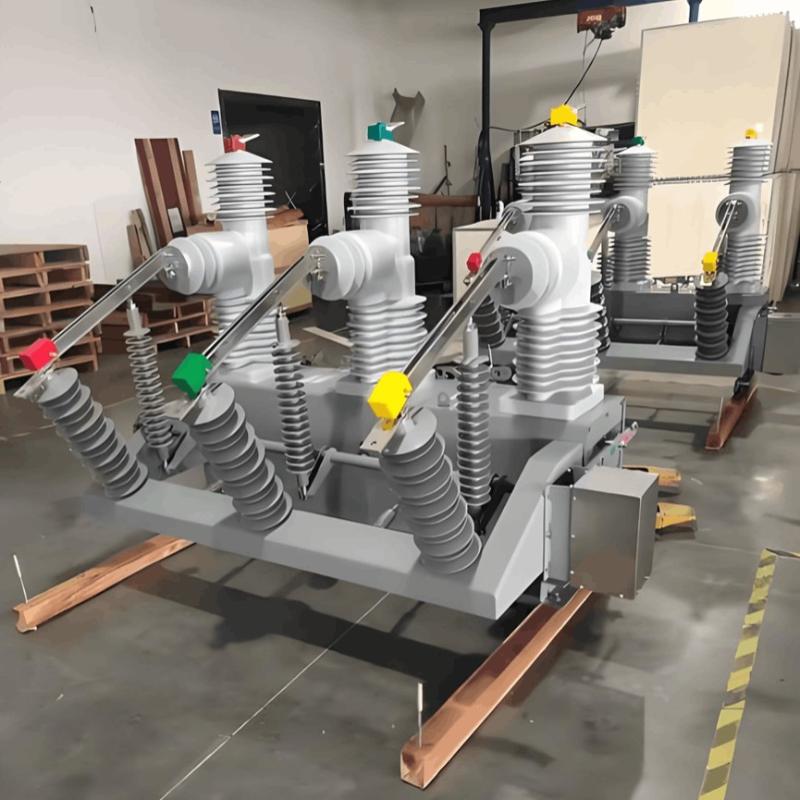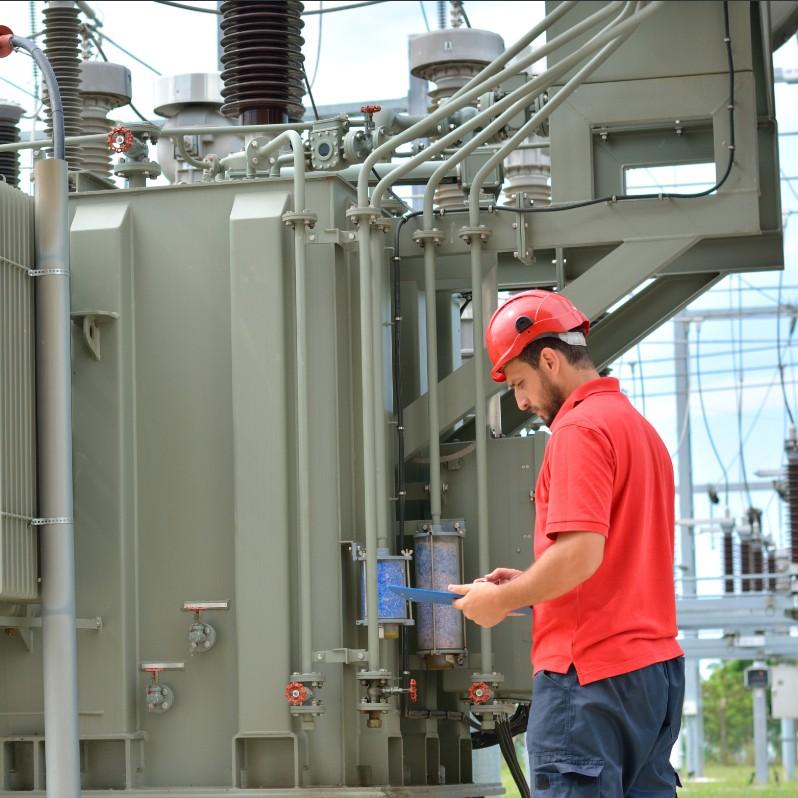1 Basic Operation Requirements
The technical parameters of current transformers shall meet the actual operation needs. Carefully check the nameplate of the current transformer to confirm whether its technical parameters meet the requirements. Current transformers for metering must be selected with rated loads and accuracy classes that meet the requirements in accordance with relevant metering standards. The actual load connected to the secondary winding of the current transformer shall be within the load range specified by the standard and shall not be too large or too small; otherwise, the accuracy of the current transformer may not meet the required accuracy class.
The secondary side of the current transformer is strictly prohibited from being open - circuited, as an open - circuit may generate high voltages that endanger personal and equipment safety. Each secondary winding of the current transformer must be provided with a grounding point, and only single - point grounding is allowed, not multi - point grounding. The current transformer shall be equipped with a rust - proof grounding plate or grounding bolt, which is firmly connected to the base or oil tank and has a clear grounding mark.
For current transformers with a voltage level of 35 kV and below, the diameter of the grounding bolt shall be ≥ 8 mm; for current transformers with a voltage level above 35 kV, the diameter of the grounding bolt shall be ≥ 12 mm. The grounding terminal of the current transformer is firmly connected to different points of the grounding grid with two leads whose cross - sectional area meets the short - circuit current requirements of the installation site. The end screen of the capacitor - screen type current transformer needs to open the grounding point during the handover test, but the end screen must be reliably grounded again after the test is completed.

For the inverted - type current transformer, if the shielding cover of the secondary winding is separately provided with a grounding terminal, its grounding terminal must also be reliably grounded. The mechanical load borne by the primary terminal of the current transformer shall be within the limit value allowed by the equipment. The current transformer shall be within the lightning protection zone. The voltage of the primary system shall not exceed the maximum working voltage of the current transformer, and the load current of the primary system shall not be greater than the rated continuous thermal current specified by the current transformer.
Current transformers used for the three phases of the same circuit shall be selected with the same parameters. When a current transformer fails and needs to be replaced, a current transformer with the same parameters as the other two phases and similar excitation characteristics of the protection winding shall be selected. Oil - immersed current transformers with a voltage level of 66 kV and above shall be installed with a metal expander. The metal expander shall be provided with an inspection window for easy observation of the oil level, and the maximum and minimum oil levels shall be marked.
The nameplate of the oil - immersed current transformer shall indicate the brand of the transformer oil. The SF₆ gas pressure of the SF₆ gas - insulated current transformer shall be maintained within the specified normal pressure range, and the annual leakage rate of SF₆ gas shall not exceed 1%. Measure the creepage distance of the external insulation of the epoxy resin - cast dry - type current transformer. The creepage distance shall meet the requirements of the use environment, and the condensation test shall be qualified.A technical file of the current transformer shall be established, including the product ledger, technical parameters, test reports, instructions, outline drawings, online monitoring records, maintenance records, relocation records, fault and handling records, and records of transformer oil addition and replacement.
2 Operation Inspection
Relevant inspections shall be carried out on the current transformer before it is put into operation. For a newly installed current transformer, the handover test shall be qualified, and the test data shall not change much from the factory test data. The handover test items shall be carried out in accordance with the requirements specified by relevant standards. The appearance of the current transformer shall be good, the bolts shall not be loose, the equipotential connection shall be firm, and the insulation distance shall meet the specified requirements.

Oil - immersed current transformers shall not have oil leakage, the oil level shall be normal, and the oil levels of the three phases shall be basically the same. SF₆ gas - insulated current transformers shall not have gas leakage, and the SF₆ gas pressure shall be normal. The umbrella skirt of the synthetic film - insulated dry - type current transformer shall be free of cracks and damage. The paint film of the current transformer shall be complete, the primary and secondary wiring terminals shall have clear marks, and there shall be a complete equipment operation number.
The primary and secondary leads of the current transformer shall be correctly and firmly connected, and the polarity shall be correct. For multi - ratio current transformers, attention shall be paid to whether the ratio is correct and whether re - connection is required. The end screen, grounding plate, or grounding bolt of the current transformer shall be reliably grounded. The pollution - proof level of the current transformer shall meet the local pollution level requirements. If not met, the method of installing a synthetic insulation umbrella skirt can be adopted to increase the creepage distance. In addition, the current transformer shall also meet the requirements related to current transformers in the anti - accident measures.
3 Safe Operation
Safe operation shall comply with the following principles: Before operating the primary and secondary circuits of the current transformer, relevant procedures must be handled in accordance with regulations, and safety prevention measures shall be taken. Current transformers that have been out of service for one year or more shall be re - inspected and tested before being put into operation again. When working on the live secondary circuit of the current transformer, the secondary circuit shall be short - circuited first to avoid an open - circuit on the secondary side of the current transformer.
4 Patrol Inspection of Current Transformers
In accordance with the requirements of relevant regulations, current transformers shall undergo regular patrol inspections and special patrol inspections during operation. Unattended stations shall conduct regular patrol inspections according to the approved cycle. During special patrol inspections, for newly put - into - operation current transformers, enhanced patrol inspections shall be carried out, and then transferred to regular patrol inspections after 3 days. For night - time closed - light patrol inspections, conventional substations shall be inspected at least once a week; unattended stations shall be inspected at least once a month. During high - temperature weather, low - temperature weather, high - humidity weather, abnormal weather, load peak periods, and when abnormal situations occur, patrol inspections shall be appropriately strengthened.
The main contents of the patrol inspection of various current transformers are as follows:
For oil - immersed current transformers, check whether the appearance is good, whether the connection is correct, whether there is looseness, whether the outer insulation surface is clean, whether there are cracks and discharge phenomena, whether the oil level of the metal expander is normal, whether there is oil leakage, whether there are abnormal vibrations, sounds, and smells, whether the grounding bolt and the end - screen grounding are firm, whether there is over - load, whether there is over - heating, whether there is abnormal discharge, and whether the bolts are loose.
In addition to the inspection items related to oil - immersed current transformers, for gas - insulated current transformers, also check whether the density relay is normal, whether the SF₆ gas pressure is normal, whether there is gas leakage, whether the silicone rubber umbrella skirt is clean, whether there is damage, cracks, discharge, and aging phenomena. For epoxy resin - cast dry - type current transformers, during patrol inspection, check whether there is over - heating, abnormal vibration and sound, whether it is damp, rusted, whether there is dust accumulation, cracks, powder erosion, and discharge phenomena on the outer insulation.
If an abnormality of the equipment is found during the patrol inspection, it shall be reported in a timely manner, and timely handling shall be carried out according to the actual situation to prevent the occurrence and expansion of accidents. When the following situations occur, the current transformer shall be stopped immediately:
When the discharge of the current transformer is serious.
When the porcelain sleeve or bushing of the current transformer has serious cracks or damage.
When there are serious cracks on the insulation surface of the epoxy resin - cast dry - type current transformer and serious discharge phenomena occur.
When the current transformer has serious abnormal vibration, abnormal sound, abnormal smell, or smoke and fire.
When the oil tank, oil conservator, or wiring terminals of the current transformer are seriously over - heated.
When the end screen of the current transformer is open - circuited or the secondary side is open - circuited.
When the metal expander is over - topped or has permanent deformation.
When the pressure relief device has been broken through.
When the current transformer has serious oil leakage.
When the gas - insulated current transformer has serious gas leakage and the gas pressure is lower than the alarm pressure.
























